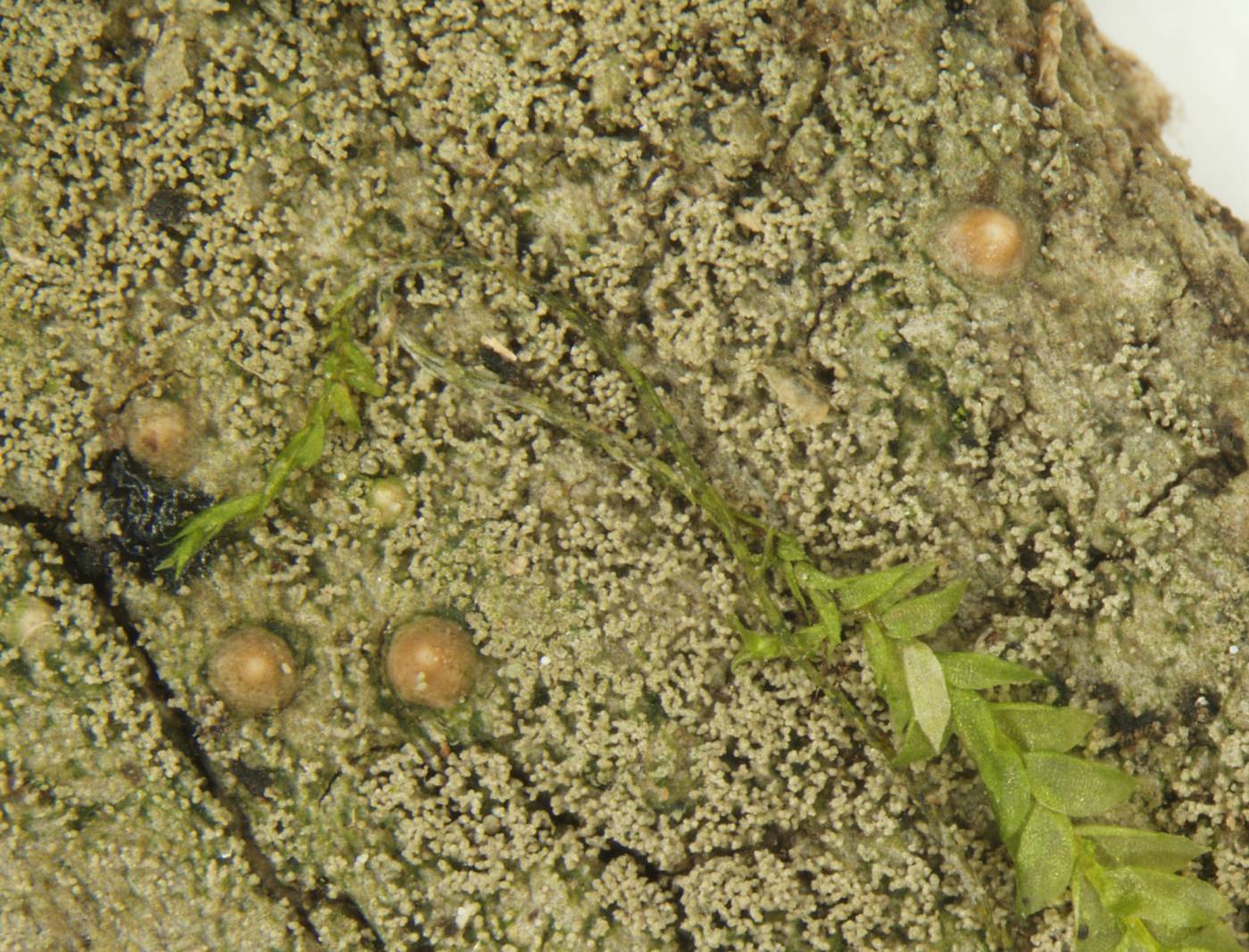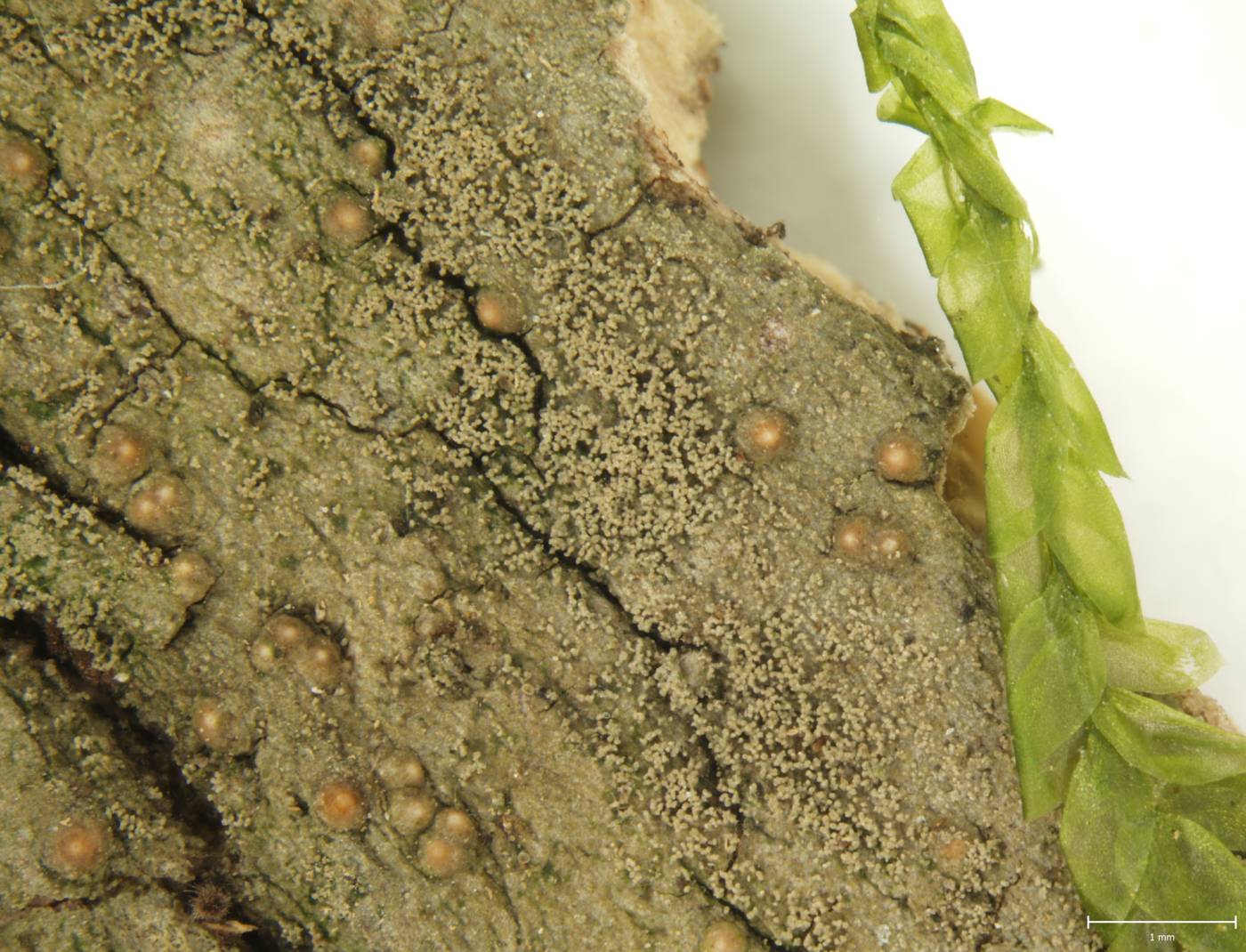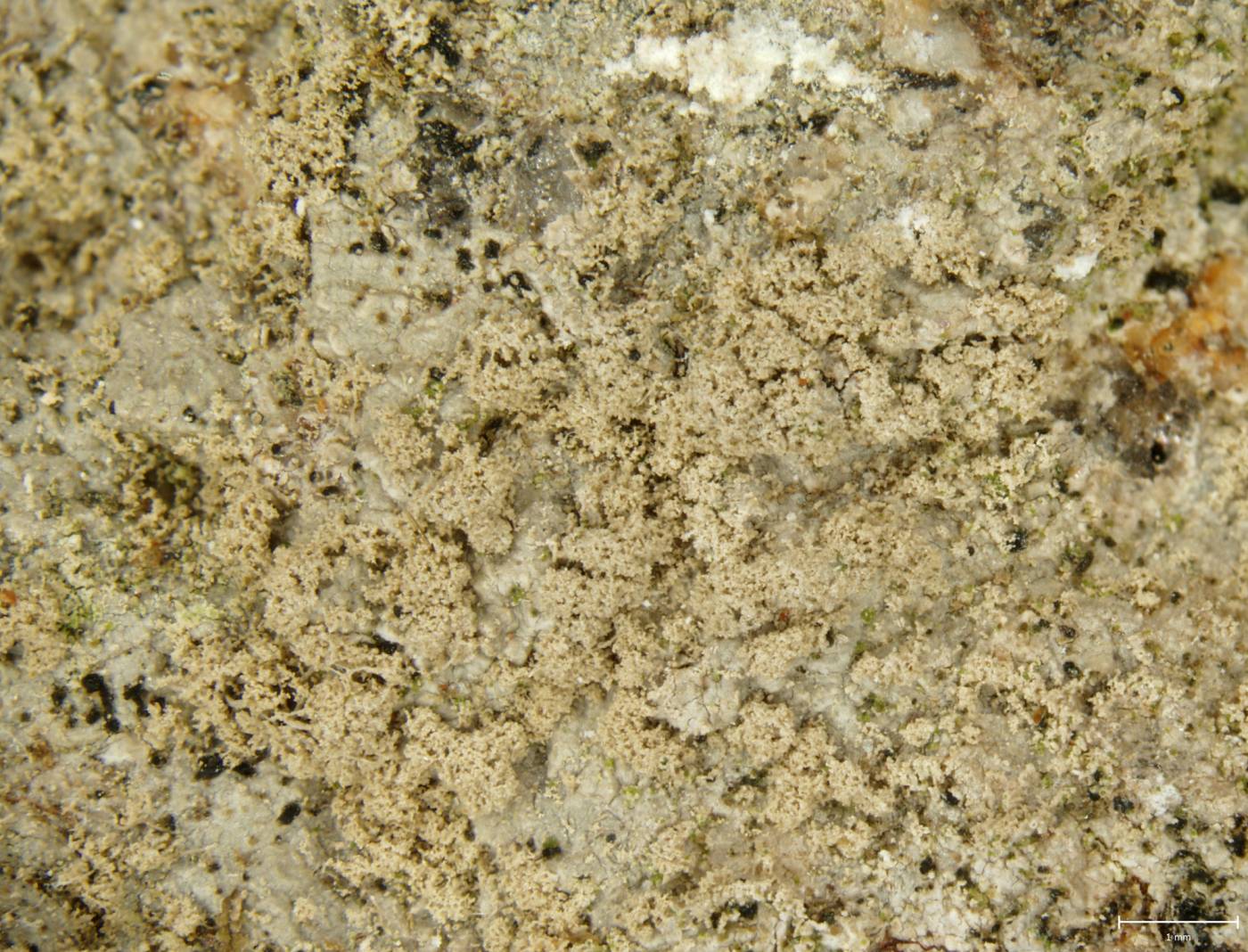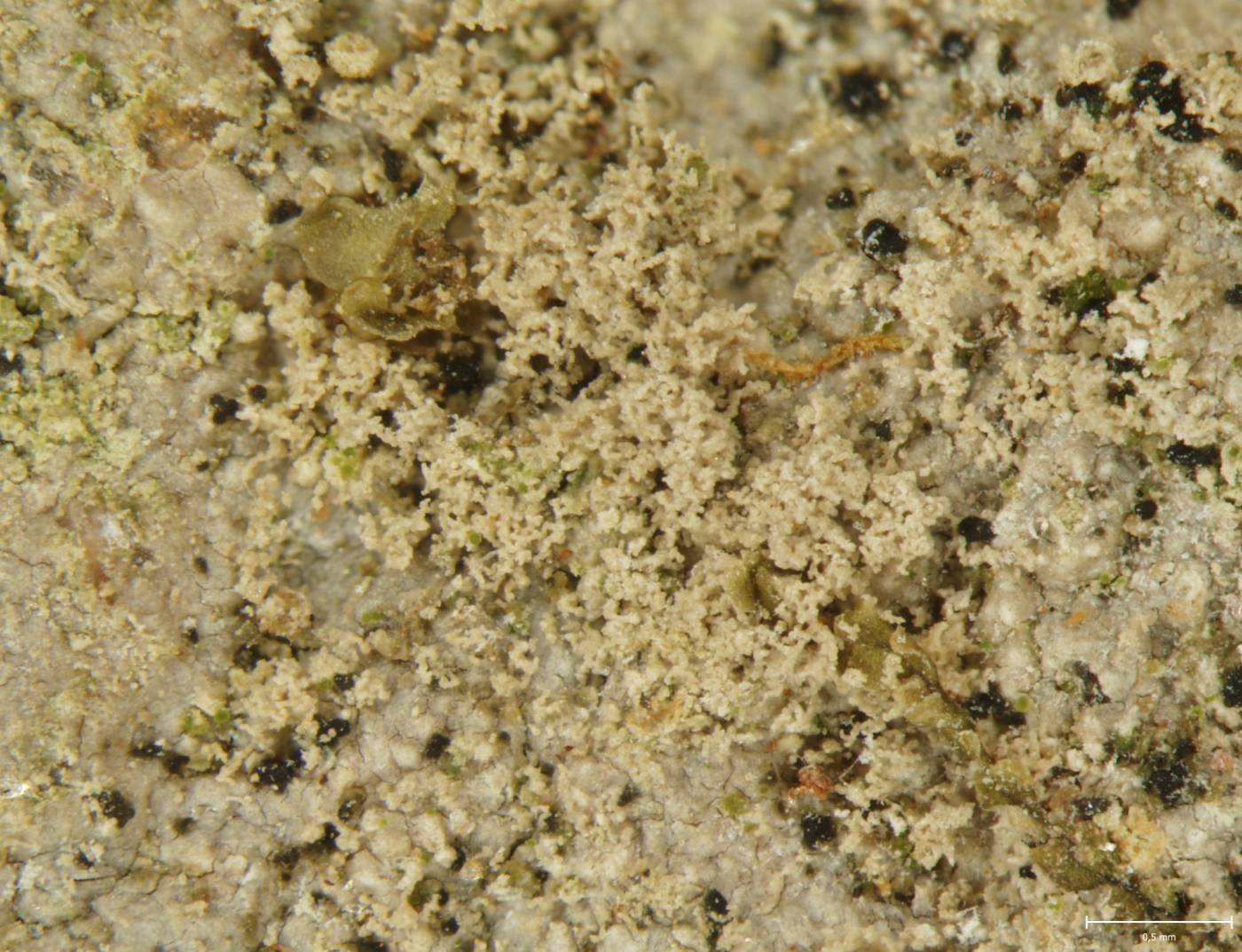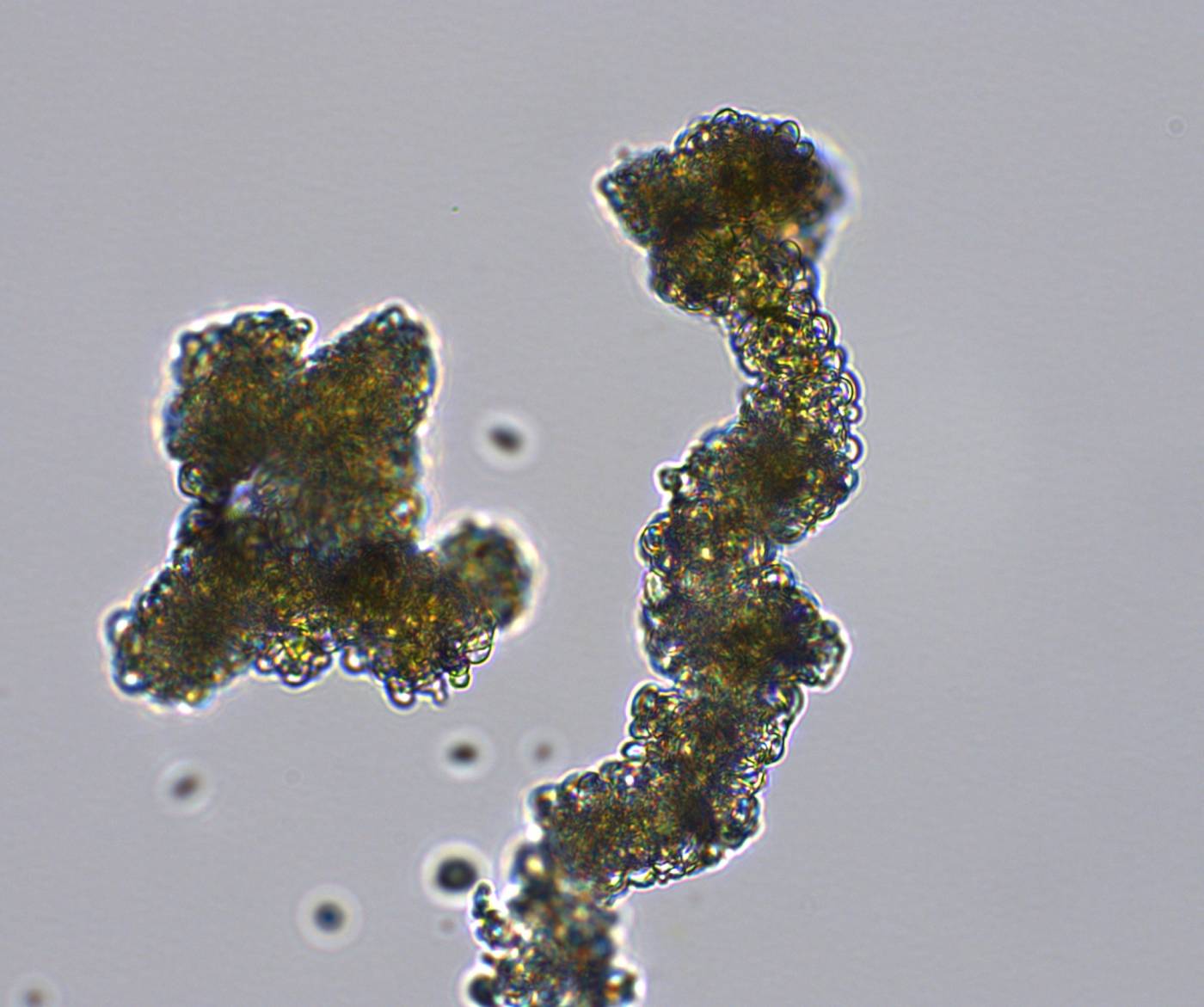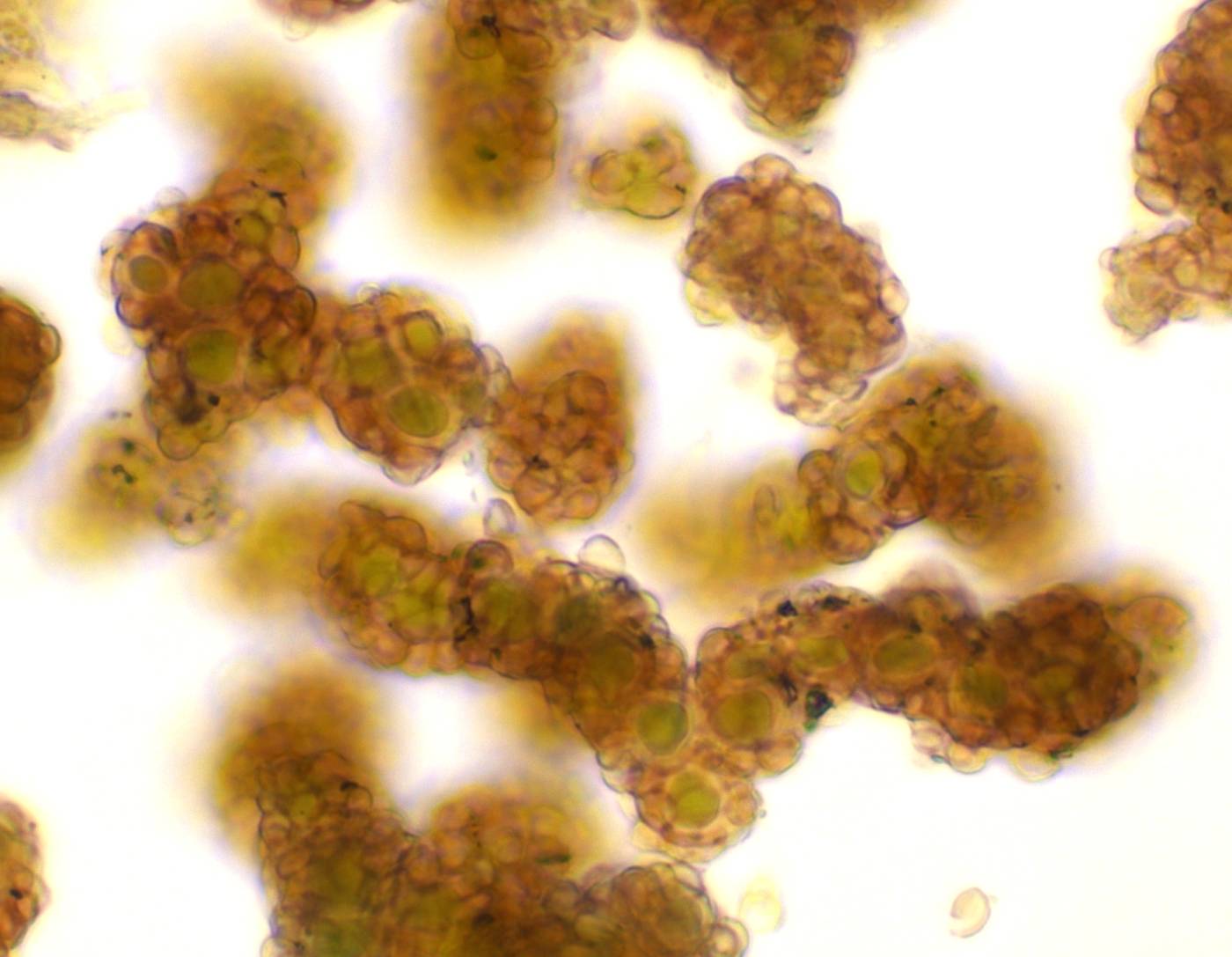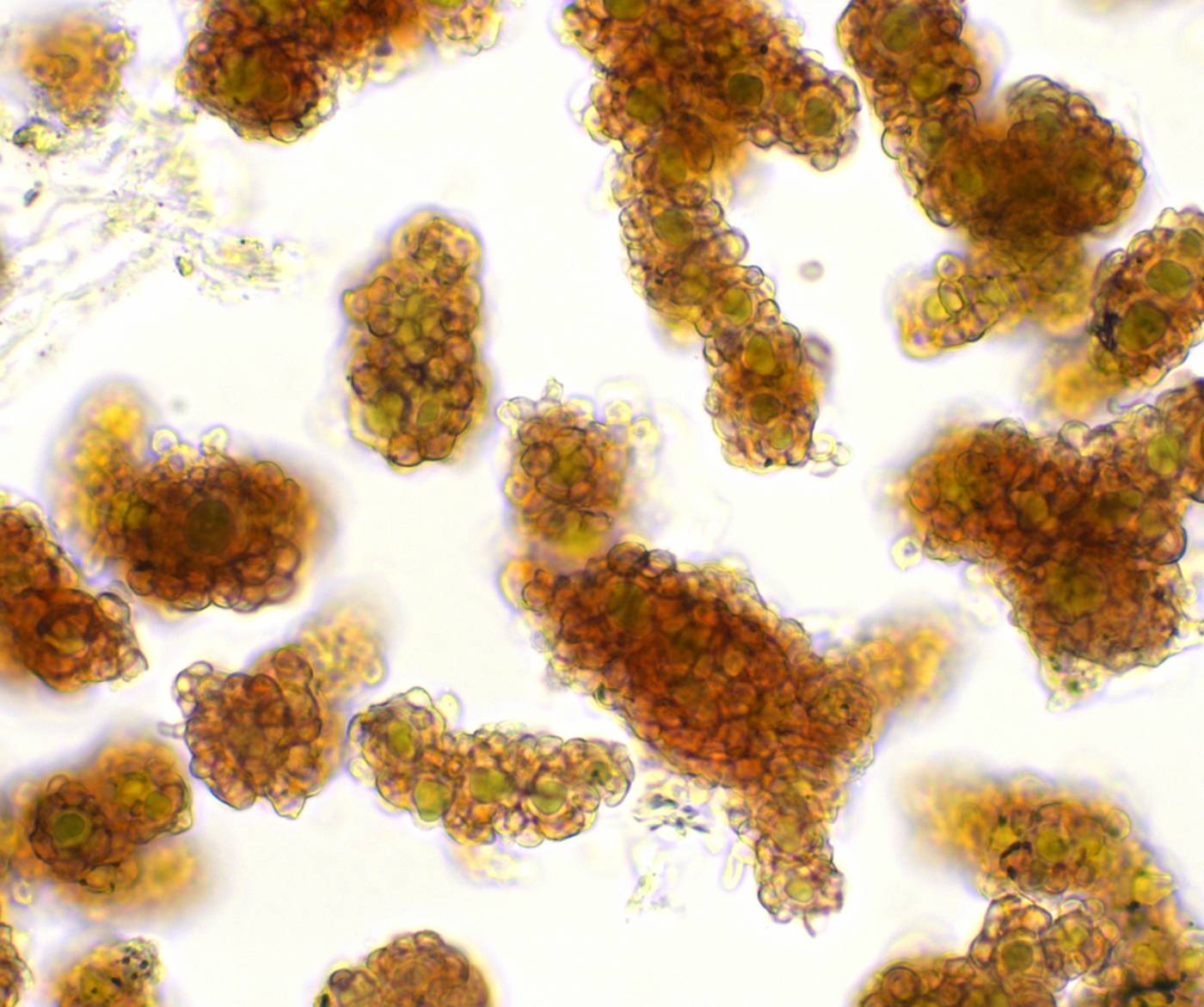Isidiate member of the genus, which has not yet been found in the Czech Republic with perithecia. Isidia are mostly branched, in well-developed specimens coralloid and squarrose. Microscopically they are characterized by a thick layer of irregular rounded cells on the surface and the presence of an unknown pigment (K+ light brown, after a few hours light purple). Very similar to isidia of P. collina, but lacking the conspicuous cell layer on the surface (Orange et al. 2020).
Porina rosei grows on deciduous trees and overhanging siliceous rocks, usually in old-growth forest stands. It is a suboceanic lichen with its centre of distribution in the Atlantic part of Europe, extremely rare in central Europe. In the Czech Republic, it has so far been documented from two localities in the Šumava Mts (Zátoňská hora, Blanice valley) and from the serpentinite area near Holubov. In all cases these were humid microhabitats and overhanging rocks.
Literature: Malíček J., Coppins B., Palice Z., Vančurová L., Vondrák J. & Sanderson N. (2023): Coenogonium nimisii – a new isidiate epiphytic lichen similar to Porina rosei. – The Lichenologist 55: 305–313. Orange A., Palice Z. & Klepsland J. (2020): A new isidiate saxicolous species of Porina (Ascomycota, Ostropales, Porinaceae). – Lichenologist 52: 267–277.
taxonomic classification:Ascomycota → Lecanoromycetes → Ostropales → Porinaceae → Porina
Red List (Malíček 2023):DD – data deficient
Occurrence in the Czech Republic
All records: 4, confirmed 3. One click on a selected square displays particular record(s), including their source(s).
